|
When you are dealing with the process of cleaning out the home of a deceased relative or you are downsizing yourself to move to a smaller home having an estate sale can be a great way to rid yourself of items you no longer want nor need. Plus it can bring in much needed cash.
While each liquidator conducts themselves a little differently and each one will have an idea in their minds about what would make a good sale in their local area, most liquidators like a mix of items ranging from collectibles, to clothing to jewelry to furniture and lighting. You likely don't need to call an estate liquidator if: 1. You have removed the most valuable items out of the sale and all that is left is low end garage sale type items. 2. The family still has to come and decide which items they will be taking. 3. If you have children in the home - remember an estate sale is a public sale - do you really want your stuff being touched and hundreds of people walking thru your home when you are living there with children. The only way to have a sale when children are involved is to move out prior to the estate sale. 4. You have yet to decide what you want to keep or sell. 5. The property does not have heat, air conditioning or a functioning bathroom. How can a liquidator work on your property with no functioning bathroom - we are sometimes at a home for 8 hours at a time. 6. Many of the items are stained or in disrepair. 7. You are not prepared to sign a contract which is a legally binding document. 8. You are not willing to allow the liquidator into your home several weeks prior to the estate sale - an average setup time for an estate sale can take 2-3 weeks to set it up, photograph it, price it and then advertise it. 9. You are not emotionally ready to move forward and feel that everything your loved one owned is worth top dollar. 10. You want to remain in the home during the sale and be involved in the prepping process. 11. You want to use old insurance appraisals for your items. 12. You want to have control over the pricing process. 13. You cannot accept the fact that your $10,000 10 year old sofa may sell for $100 or not at all. Lastly, please be accurate about what your want to sell. Having a liquidator drive to your home for a sales call when there is only 3 items for sale is unfair.
0 Comments
 Hiring the Right Hands Transitioning to a new space is a big step at any age and stage. Getting your parents ready to leave their nest isn’t only about decluttering, minimizing, and downsizing. It’s also a physical, mental, and emotional process that, above all, should be approached with respect and sensitivity. Luckily, BHM’s senior-transition professionals are at hand to help you navigate this delicate and daunting process both efficiently and effortlessly. Having the Talk It’s not easy being in the middle. If you’re part of the sandwich generation then you know all about it. The dual task of getting your kids to keep up with their homework and your parents to keep up with the housework can be a real balancing act. Americans are living longer and longer. In fact, based on U.S. Census Bureau data, the Urban Institute estimates that there could be about 80 million elderly in the country by 2040. With such stats, you’ll want Mom and Dad to be comfortable and safe for the long run, which may mean moving out of the home they raised you in. Try to discuss your parents’ long-term residential options before they’ve “outgrown” your childhood home. Depending on their budget and needs, they may choose from senior citizen apartment buildings, assisted-living residences, or accessory dwelling units (ADU), among others. If feasible, many people decide to age in place at home. Although they get to skip the hassle of packing and moving, some changes could still be essential. For instance, it’s a good idea to declutter and update their spaces. You’ll want to remove tripping hazards, add accommodative devices (e.g., grab bars, shower chairs, etc.), and install safety aides to prevent falls and accidents. Eldercare professionals, consultants, and occupational therapists can help you determine what’s necessary to keep your parents’ abode safe and senior-friendly. Decisions, Decisions When it’s time to move to that forwarding address, decision-making can be overwhelming. What should we take, donate, keep, sell, or throw away? Where do we find a reputable mover? What do we need to pack? Where do we even start? Downsizing and preparing for a move after living in your home for many years is daunting. Most folks don't realize how much work is involved or that it can take months to empty out every drawer, file cabinet, and closet. In fact, Mom and Pop might have accumulated up to 40, 50, or even 60 years’ worth of belongings! Limited physical ability and an accelerated time frame may pose challenges and lead to a great deal of frustration, too. It’s also important to consider what will actually fit in their new space. New Home Sweet Home Preparing for a safe and organized space for Mom and Dad to age in place gracefully is challenging but doesn’t have to be done alone. BHM can help ease this experience tremendously. In addition to evaluating and sorting your belongings, our senior transition services include holding estate sales, un/packing your items before/after your move, and personally shopping for your new home sweet home. Under our watch, both your loved ones and the things they love will be handled with the utmost care! Authored by Lisa Goiens, Blog Writer for BHM Estate Sale Services We always like to share great articles when they come across our screen. EstateSales.org had this wonderful article on what are the most searched items at estate sales. Take a read and then sign up to get notifications for estate sales from www.estatesales.org - they are a competitive site to estatesales.net!
Estate Sale shoppers are always on the search for the next great find, with certain types of items shifting in popularity each year. At EstateSales.org, we decided to dig into our website logs to see what types of items buyers are searching for the most, and here’s what we uncovered. The Top 20 Search Terms on EstateSales.org In 2021: Tools -- At the very top of our list of popular searches was “tools”. A sizable tool collection purchased at an estate sale can save the buyer hundreds or even thousands of dollars vs buying the same set at retail. Some of the best tool brands can be found at estate sales: Dewalt, Craftsman, Milwaukee, Makita, Bosch, Stanley, Ryobi, Kobalt, Husky, and many more. Some buyers are also after old tools for their antique value. Records -- Coming in at #2 on our list of most searched for terms is “records”. You wouldn’t think someone would drop $40,000 for old vinyl, but they do. Avid record collectors are willing to dish out a lot of dough for a coveted vinyl record. Estate sale buyers that specialize in reselling vinyl records are eager to shop your estate sale if you have plenty of records for them to sift through. Remember to add that to your estate sale advertisement if you have an estate sale coming up and feature photographs of the vinyl records. Books -- Rounding out the top 3 most searched for terms is “books”. If your client is a bookworm, they probably have a wide range of books in their library and buyers know that estate sales often have large collections for sale. Certain books, such as first prints of iconic titles and very old books can be worth quite a bit of money and are sought out by collectors. There are some iconic books to keep a watchful eye for and price accordingly.
Comic Books -- At #4 on our list of most popular searches is “comic books”. The comic book market is currently at an all-time high, with many of the older gold, silver and bronze age key issues seeing astronomical price growth over the last year. GoCollect, a popular online comic price guide, attributes some of the recent price spikes to the explosion of the MCU (Marvel Cinematic Universe). With blockbuster movie franchises such as The Avengers, Black Panther, Iron Man, Captain America, and Spiderman all making the top 25 highest grossing movies of all time list. One popular theory as to why comic books and other tangible collectibles are skyrocketing in popularity and price in 2021 is due to the global Covid pandemic causing uncertainty with the stock market. With this uncertainty, investors are turning their attention to tangible, value-stable investments, and comic books have a hugely loyal following. The emergence of comic book grading companies such as CGC and CBCS and PGX have also created more credibility and trust as comic books can now be independently graded and certified as authentic. Buyers are keen to find deals on comic books collections found at estate sales in the hopes that they can score a good price and hold onto it as an investment or flip it for a profit. Coins -- At #5 on our list is “coins”. Having a numismatic appraiser in your contact list is extremely important. Estate coins, even non-precious metal coins should always be evaluated by an experienced coin dealer. Some ancient coins are rare to find and many don’t even look like today’s coins, so don’t be quick to judge and price without doing the proper research. Coin experienced estate sale shoppers know what they’re after, so put the coin photos front and center when advertising an upcoming estate sale. Vintage Clothing -- #6 on our popular terms list is “clothing”. Buyers that covet styles of the past really enjoy shopping estate sales. There’s no vintage cloth like the ones found at sales across the country. Recycling and upcycling is the latest crave among younger shoppers. Whether it’s for style or environmental reasons, estate sale clothing is more popular than ever in 2021. Clocks -- At position #7 is “clocks”. With digital clocks all around us, does anyone really need a wall or mantel clock anymore? Of course they do. As items begin to dwindle from everyday life, they also tend to become desirable by the masses. Estate sales offer a unique variety of clocks to choose from and estate sale clock buyers are out in force hunting for the next great clock to resell or add to a collection. Baseball Cards -- Coming in at #8 is “baseball cards”. Baseball cards are possibly one of the more difficult items to research and price, but shoppers looking for them at estate sales know exactly what they’re looking for. Every year, a new card is released for collectors, making the older ones much harder to come by. Buyers across the country have been asking for baseball cards at estate sales much more than in prior years. The resale value has increased therefore so did the demand. Mid Century Style -- #9 on our list is “mid century”. What was thought of as a trend prior to 2020 looks like it’s here to stay. As more and more homes are built with the sleek mid-century modern design, the interior of a home and its furnishings are following the same pattern. There is no particular age group that loves the mid-century modern style, it’s across all age spectrums. From furnishings or accessories, all mid-century style items have reached a new popularity spectrum with estate sale shoppers. Cameras -- Rounding out the top most 10 popular search terms is “camera”. With Snapchat, Instagram, and other social media platforms, you’d think non-digital cameras are the thing of the past. Well, they are, but they are still the cool cam with younger people. When we’re young, being a little different just sets us apart, and maybe that’s exactly why younger generations are into vintage cameras. Of course, many estate sale shoppers are searching for estate sales that may be offering used high-grade digital cameras and equipment for professional photographers or those looking to get started in the field without breaking the bank. Pokemon -- Number 11 was a surprise – it’s “pokemon”. Pokemon started as a video game made for the Nintendo Gameboy in Japan in 1996 and has since gained in popularity. Later in 1996, the producers of Pokemon created a trading card game consisting of 102 cards sold in packs of 11 cards. Parents who threw out their kids old Pokemon cards might be kicking themselves. These cards have become extremely collectible, with the rarest one, a first edition “Charizard” recently fetching over $300,000 at auction. While your chances of finding a first edition Charizard at an estate sale are slim to none, this doesn’t deter buyers from scouring estate sales for the more common but still very collectible Pokemon cards that came in later series. Dolls -- Number 12 on our list is “dolls”. Dolls have been a consistently popular category searched for at estate sales with some collections spanning multiple full rooms. People collect and seek out dolls for many reasons that align well with why people shop at estate sales in general – a love of antiques, history, vintage fashion and nostalgia to name a few. Dolls can also be part of a home’s decor and soothe the soul. It’s no wonder why this term consistently makes our list of top search terms. Sewing Tools & Patterns -- At number 13 is “sewing”. Sewing is what grandma did but not anymore. From young to old, sewing is one of those hobbies that’s finally getting the attention it deserves in 2021. It started with making unique masks, and it continues well into 2021 by making pet clothing, fun costumes, and more. Patterns, thread, sewing machines have all increased in prices thus driving new buyers to shop estate sales and other community sales with a specific focus on buying sewing items. Bottles and Glass“Bottle” -- was our # 14 search term. Colored glass from mosaic art to DIY displays, colored glass and bottles are in high demand. There are so many uses for bottles and glass. From soap dispensers to bird feeders and everything in between, the ideas are endless. Check out these tips and price your colored glass and bottles at the next estate sale accordingly, because they are definitely in demand by estate sale shoppers in 2021. Guitars & Musical Instruments -- Coming in at #15 was “guitar”. Besides staying safe in 2020, taking up a new hobby was the thing to do. Everyone had more time on their hands. YouTube videos teaching musical instruments saw a huge 200% increase in views during the height of the pandemic months. While some people’s hobby’s fade away, many continue with their newfound passion. Musical instruments such as guitars can be quite expensive when you’re just diving into something new. Estate sale guitars serve as a great hub to find the next musical instrument or guitar at a fraction of what someone might pay retail. A piano might’ve been difficult to get rid of in prior years, but in 2021, musical instruments of all types are flying out the door at estate sales Cars and Vehicles -- Our #16 most popular search term was “car”. This year, there is a huge surge in vehicle prices. The demand for used recreational vehicles, trucks, and campers has increased thus increasing the value due to the short supply of used cars. Auction houses shut down their doors during the pandemic, resellers of used vehicles could not access the supply easily thus creating a big demand that continues to be felt well into 2021. If your upcoming estate sale has a vehicle for sale, no matter what year, you won’t have any trouble finding a buyer that will purchase it on the first day of the sale. Jewelry -- Coming in at #17 was “Jewelry“, which is even more popular this year due to the fluctuating market and economy. Precious metal jewelry such as silver, gold, and platinum are sought after more than ever. Fear of inflation followed by the recession; buyers find a safe haven in putting their money on precious metals even if it comes in the form of a jewelry piece at estate sales. Patio Furnishing & Accessories -- At #18 we had “patio”. As more and more people find themselves working from home, the patio became a focal point and a central hangout hub for families and professionals alike. Turning a patio area into an enjoyable oasis can be expensive if shopping retail. Items at estate sales are generally well cared for, so patio furniture and accessories have been flying out of the front door at estate sales across the country. Rugs -- The 19th most popular search term we saw was “rug”. Anything to do with the home has increased in popularity. Along the same lines as appliances, it’s easier to walk into a local estate sale, see the rug, buy it and take it home. Many retail shops will show a sample and place an order for a rug, only to wait months for it to arrive. What used to be a difficult item to sell in prior years, just became much easier post-pandemic. Bicycles -- Rounding out our top 20 list of popular search terms was “bike”. Last year, there was a shortage of bicycles. Even Walmart sold out of bicycles and other outdoor activity-related items such as skateboards and rollerblades. That shortage has not subsided. A big increase in gas prices, combined with inflated new bicycle prices has driven new buyers to shop estate sales on weekends just to find a bicycle at an affordable price. Whether for fun or to use it for commuting, it’s definitely an item that will continue to be in demand for 2021. When we had our developers pull a report on our search dataset of over a million searches, these are the top 20 items that have remained consistent across the board. It’s not an all-inclusive list, and the list can possibly change at any time. As we navigate our way through the ever-changing landscape of the recent pandemic, the economy and availability of certain items will also shift. Some items that may seem popular at this time may become less desirable and others will increase in demand. We at EstateSales.org bring estate sale buyers and estate sale companies together by sharing information that will help both parties achieve successful results no matter what they’re searching for.  itchen SOS: Make More Space June’s all about graduates, grooms, and brides, right? Yes, but it’s also known for food celebrations like National Doughnut and Onion Rings Day. It’s no wonder that such “holidays” bring to mind the center of every home—the kitchen. It’s where you cook up comfort for family and catch up over cocktails with friends. However, it’s no fun to cook in a chaotic kitchen, and it’s challenging to clean. With all the year-round activity that takes place there, it might be time to give it some TLC. BHM has just the recipe to help you restore order to the heart of your home. Boasting 10 years+ years of experience, our organizing team shares four easy steps to prep your kitchen for summer entertaining. 1. Divide -- Tackle the kitchen in segments, e.g., food prep, cooking, service, and storage. Start in one zone, working clockwise until you come full circle. “Take 15” after completing an area. That way, you’ll save energy, stay motivated, and see your progress in the making. 2. Purge -Remove everything shelf by shelf, cabinet by cabinet. Rid yourself of anything that has expired, isn’t wanted, or doesn’t function. This includes small appliances, old cookbooks, and mismatched Tupperware. Sort them into three piles: keep, discard, donate. Throw out any expired food products, including spices. 3. Categorize - Place all like items together, e.g., food with food, pots with pans, napkins with paper towels, etc. Arrange canned and boxed goods in your cabinets/shelves the same way they’re displayed on store shelves. This setup allows you to find what you need quickly and take stock of what’s running low. Put the boxes/cans that will expire soonest up front. If you have the space, we always recommend getting a can organizer as that will allow you to easily take the bottom one (the one with the date that will expire soonest). 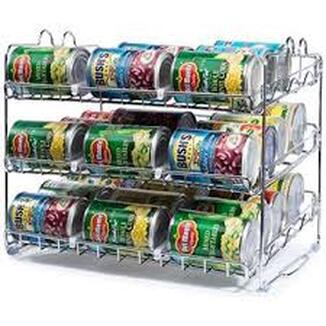 4. Conquer the Clutter - Leave food prep and serving stations free and clear; remove all small appliances and miscellaneous items. Set aside a space for your top three kitchen aids to reside, and put everything else in a designated cabinet.
Enjoy. This photo, provided by Sotheby’s, in New York, on Tuesday, March 2, 2021, shows a small porcelain bowl bought for $35 at a Connecticut yard sale that turned out to be a rare, 15th century Chinese artifact worth between $300,000 and $500,000. The bowl will be offered in Sotheby’s Auction of Important Chinese Art, in New York, on March 17. (Sotheby’s via AP) 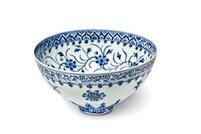 Dave Collins/AP Posted:Updated: MAR 3, 2021 / 04:06 AM CST HARTFORD, Conn. (AP) — Talk about your yard sale finds. A small porcelain bowl bought for $35 at a Connecticut yard sale turned out to be a rare, 15th century Chinese artifact worth between $300,000 and $500,000 that is about to go up for auction at Sotheby’s. The white bowl adorned with cobalt blue paintings of flowers and other designs is about 6 inches in diameter. An antiques enthusiast came across the piece and thought it could be something special when browsing a yard sale in the New Haven area last year, according to Sotheby’s. The piece, one of only seven such bowls known to exist in the world, will be up for auction in New York on March 17 as part of Sotheby’s Auction of Important Chinese Art. The buyer, whom is not being named, paid the $35 asking price and later emailed information and photos to Sotheby’s asking for an evaluation. The auction house’s experts on Chinese ceramics and art, Angela McAteer and Hang Yin, get many such emails every week, but this was one of the kind they dream about. “It was immediately apparent to both of us that we were looking at something really very, very special,” said McAteer, Sotheby’s senior vice president and head of its Chinese Works of Art Department. “The style of painting, the shape of the bowl, even just the color of the blue is quite characteristic of that early, early 15th century period of porcelain.” They confirmed it was from the 1400s when they were able to look at it in person. There are no scientific tests, only the trained eyes and hands of specialists. The bowl was very smooth to the touch, its glaze was silky and the color and designs are distinctive of the period. The bowl will be offered in Sotheby’s Auction of Important Chinese Art, in New York, on March 17. (Sotheby’s via AP)“All the characteristics and hallmarks are there that identify it as a product of the early Ming period,” McAteer said. McAteer and Yin determined the bowl dates back to the early 1400s during the reign of the Yongle emperor, the third ruler of the Ming Dynasty, and was made for the Yongle court. The Yongle court was known to have ushered in a new style to the porcelain kilns in the city of Jingdezhen, and the bowl is a quintessential Yongle product, according to Sotheby’s. The bowl was made in the shape of a lotus bud or chicken heart. Inside, it is decorated with a medallion at the bottom and a quatrefoil motif surrounded by flowers. The outside includes four blossoms of lotus, peony, chrysanthemum and pomegranate flower. There are also intricate patterns at the top of both the outside and inside. McAteer said only six other such bowls are known to exist, and most of them are in museums. No others are in the United States. There are two at the National Palace Museum in Taipei, Taiwan, two at museums in London and one in the National Museum of Iran in Tehran, according to Sotheby’s. How the bowl ended up at a Connecticut yard sale remains a mystery. McAteer said it’s possible it was passed down through generations of the same family who did not know how unique it was. “It’s always quite astounding to think that it kind of still happens, that these treasures can be discovered,” McAteer said. “It’s always really exciting for us as specialists when something we didn’t even know existed here appears seemingly out of nowhere.” Trademark and Copyright 2021 The Associated Press. All rights reserved. out Almost every home requiring an estate sale has some china and crystal. Some homes have more than others. Our very first estate sale was in South Orange, NJ in a lovely home once owned by an Italian couple who had lived in the home 60 years.
The couple had taken in china sets from every family member that had passed away, by the time their home was ready for an estate sale the house contained 30 sets of china, hundreds of crystal and an entire garage filled with Christmas decorations. Most folks don't have that much china but many have several sets. So the people who are selling the china have this notion that since their china is old that it must have value. People cannot grasp that their mother's or grandmothers beautiful fancy china does not warrant a hefty price tag, especially since they were told how good china maintains it's value. Full sets of china can sometimes garner up to $500 but rarely does it ever go past that number and that would have to be for a full set that can serve 12 people in mint condition and one of the better known brands like Rosenthal, Paul McCobb, Grainger, Majolica, Beleek, Herend to name a few. The china also must be in very good to excellent condition. No chips, cracks, washed out colors. So why doesn't china sell, well mostly the millennials have no interest in hand washing dishes after a holiday dinner. The throw-away dishes are so durable and pretty now that it's so much more convenient to just buy the hard plastic ones that can go right into the garbage when you are done with your meal. This allows the host to not be glued to her kitchen sink and to sit and relax with his/her house guests. I don't have real china myself, but I do have sterling flatware and honestly it's a pain to handwash the flatware. I find myself rarely pulling my beautiful set out and only doing it for special occasions. I'm not saying china and crystal never sell, I'm just saying it won't sell for the prices your mom or grandmother told you it would sell for as in their day, most families ate on china not paper plates.  Many times, when my company is called upon to stage a home for sale, I sit down with the client and explain to them I have one goal and one goal only - to get their home to appear twice as large and to have twice as much sunlight. I explain that I'm not an interior designer and that I'll be moving things around so that they should not be offended by my design choices. It's not about family living, it's about square footage! 100% of the homes my company has worked on has had to have furniture moved around, given away, junked, or placed in a garage for the move to the clients next home. This is totally normal. Some folks resist the changes I make and others let me do my magic. I once worked on a home that had been on the market for a year with no bites. I had been brought in to do the estate sale but during the course of our conservation about the estate sale, my client asked what I thought about the staging as he was dismayed the house had not sold yet. I told him exactly what I would do and how quickly I could do it and the next thing I know, I not only got the staging job I got the estate sale gig as well. That house took us maybe 3 days to get it all done and the brokers (there were two of them) decided the house looked so different from when they originally took pictures to sell it that they would bring in a photographer again and take new pictures. With the new pictures emphasizing the square footage in the home and the removal of the heavy window dressing showcased the amount of sunlight that the home gets, the house was under contract within a week after we finished staging. What's my favorite thing about staging --- it's the dressing up part I adore the most. I love dressing a fireplace, a bookcase, a piece of furniture. I love how I can dramatically change how something looks just by changing the items on it. When my company stages we go thru the cabinets as many folks forget what they have in them and almost always we find the greatest pieces that look wonderful when displayed properly. Most stagers use their own furniture and home décor. They make their money by bringing items in from their warehouse. They then charge the client for the "rental" of the item per week/month. On average a room that has to be staged for a minimum time of 2-3 months can cost $1,500 or more. If you have to stage a whole house that is a lot of money. It's not unreasonable for a whole house staging for it to cost well past $10,000. We don't bring in anything from the outside. It's all from what the client already has in their home. If you have a home that need's staging feel free to contact us at info@bhmestatesales.com! Most homes take an average of a week to get staged so it's a fairly quick process. Stay tuned for our next blog.... We know many folks find the idea of getting their house ready for sale daunting. So many of us just don't no where to start.
First off, I highly recommend that if you plan to sell in the next 3-6 months that you start the process now. It takes quite a bit of time to go thru every drawer, every cabinet, the attic, the basement and the garage. It's an exhausting process. If you don't have time on your side, getting your home on the market should include the assistance of a professional organizer and stager. This is the fastest, most efficient way to get your house on the market. If you are energized and have time on your side, we recommend the following: 1. Start cleaning out your home 3 months prior to putting your home on the market. 2. Assign yourself and the members of your family to go thru their own bedrooms and give them deadlines of no more than 2 weeks. 3. After 2-3 weeks you should be ready to tackle the dining room, living room, den, sunroom, kitchen. Assign yourself a room every 2-3 days. That will give you 3 days to complete the cleanout of the room. You should have several empty boxes of which you sort your belongings - use these categories (charity donation, give to family member, junk removal, move to new home, estate sale). That last box is only needed if you plan to have an estate sale which is done only after you have a firmly signed contract on your home and usually done after you've moved or if you are staying in the home till the very end the estate sale happens a week or two prior to your closing date. 4. Start with the easiest rooms first as that way, you will slowly establish a good decluttering rhythm by the time you hit the hard rooms, like the basement, the attic and the garage. 5. By week 6, you should already be hitting these harder spaces which will likely take you a good week or two to clean out each space, thereby bringing you to the 3 month mark which will be right around the time your realtor will want to list your home. If you are not able to do all this work on your home or don't have family and friends to help you, then by all means hire someone to help you. It's worth every penny, and most organizers/stagers can get your house ready in less than 2 weeks time. BHM is one of a rare few companies that provide all the needed services to get your home on the market quickly. We do everything from Organizing, Decluttering, Staging, Estate Sales and Charity Cleanout. We cover the same towns that we would cover for our estate sale division so please call us if we can be of service PH: 646-823-5231. Great article by Julie Hall, Director of ASEL. I have been a member of ASEL for several years now. It's truly the only association that does its due diligence in verifying and certifying liquidators. Please enjoy this well written article! Why Choosing an Estate Sale Company Based on a Low Commission Can Cost a Fortune
When it comes to the outlay of money, everyone wants the best deal they can find. That’s just good business sense. It stops making sense when people make quick decisions to go with the “cheapest” because it can often backfire costing much more to correct the situation, if the situation is even correctable. Hiring the right professional estate liquidator is of vital importance. The emphasis in this article is on the word professional. This estate sale professional is someone who has dedicated much time, care, concern, diligence, devotion, education, research, (plus so much more) into the skills required to conduct a successful estate sale for their clients. This professional works countless hours and endures many sleepless nights, constantly learning and navigating an ever-changing industry and dealing with an increasingly difficult public of buyers. Conducting an estate sale is not just about organizing and displaying, nor is it as easy as it appears. It requires patience, due diligence, long hours of research, outstanding customer relations skills, knowing the right resources, and the ability to wear many different hats on any given day. True professionals do it well and make it look easy, even though it is actually very challenging. Therein lies the mark of a true professional. Estate Sale Professionals earn their commission because they take the time to understand the personal property and maximize the sale proceeds by implementing a methodical plan to succeed for the client. Knowing this, why would anyone select an estate sale company that undercuts or offers a low-ball commission without understanding all the details of the estate? This industry is inundated with pop-up or fly-by-night companies that appear out of nowhere. While there are exceptions to every rule, we often see the following:
Will they:
Pop-up companies may leave the un-sold remainder for the client to contend with. By then, contacting a professional is too late as the damage is done. The best items will have been sold and the sale proceeds were not maximized. These companies may offer a low commission but there could be many more individual service charges that add up to more than the professional’s original (higher) commission. The client should have a clear understanding of what the commission includes and what other fees will be involved before signing a contract.
©2020 The American Society of Estate Liquidators® LLC. All rights reserved. None of this article may be reproduced, copied or distributed in any form, in whole or part, without attribution and the permission of ASEL®. Julie Hall, Director of ASEL The American Society of Estate Liquidators, LLC www.ASELonline.com 704-543-1051 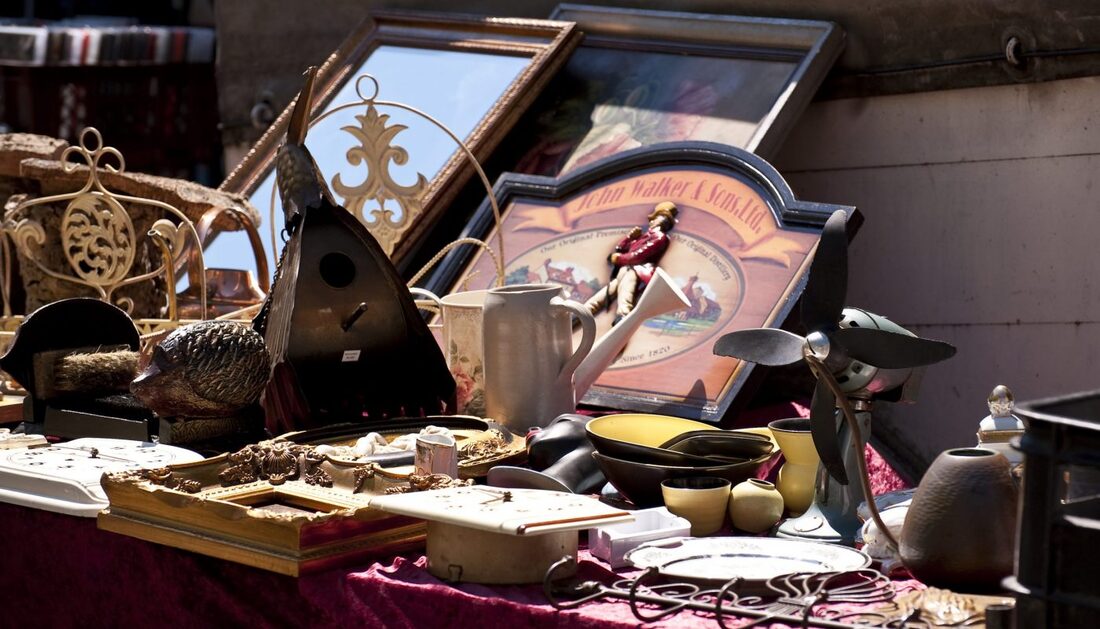 Time is Money – Calculating the Time to Sell One Estate Item (courtesy of https://www.executorium.com/blog/) October 10, 2020 There are many ways to sell an item, and convert the item to cash for deposit in the Estate Bank account. Often Executors bristle at the cost or commission of Auctions or Estate Sales companies, but the value is not often obvious until you look at the time it takes to move 1 item. Multiply those ‘manhours’ that times the number of items in the undistributed personalty designated for liquidation, and the value becomes clear. Research Spend time looking at comp items to get an idea of the price to list the item . EBay, Google, Facebook Groups all provide good information to help determine price and desirability. Cleaning To give your item the best change of selling, for the best possible price, prepare the item by cleaning in order to present in the best possible light. scene on a flea marketListing Note: there may be some seller’s fees associated with listing an item for sale online.
Sold Once your item is sold, consider time for packaging the item as necessary considering its fragility. Consider the time and expense of the post office visit. Do you have the proper packaging, or will that require additional time and money to acquire? Packing and addressing time varies depending on the item. If professional shipping prep is necessary, consider the cost of the professional work and travel to and from the professional pack and ship location. Collection Collection is normally straightforward on e-mail and other online selling platforms; however, collection and conclusion of the transaction might be considered in your time calculation. The incremental time of each stage in the selling process might seem like “not much”, but when you put it all together, the full amount of time can put a serious dent in your monetary “take-away”. Your time is not free. Booking an estate liquidator at the last minute has always been a problem in the liquidation business. Folks are selling their homes in record times and buyers are expecting them to vacate in a month instead of the normal 3 month time.
This can be problematic as many of the top liquidators are already booked sometimes as much as 4 months ahead. The setting up a proper estate sale and marketing it correctly can take at least 4 weeks but in some cases even as much as 8 weeks, so when a client calls you and they give a closing date of less than a month away there is great hesitation to take on the sale. A good liquidator will know that a set up can take many hours and when rushed important pricing details and research can be missed. When folks are looking for a last minute liquidator they are generally left with those liquidators who do less prep - which means less items researched and prices. Those companies that doe 3-4 sales a weekend usually are the ones that do little to no prep. These sales are generally referred to in the industry as picker sales. A picker sale is where customers rummage thru the home and bring the item(s) to the cashier table to get pricing on the item. The sales manager or cashier just throws out a number. This method of pulling prices out of your head can go very wrong as it's impossible to have the time to properly look over the item, research market stats and deal with what will likely be a generally long line. Most folks contemplate the sale of their home a year or two head. That is good you should be thinking about it that far ahead as there is much to do in order to get your house ready. The first thing you should do is get an idea of where you are moving to and if and what you plan to take with you to your next home. Some folks already have a finished home they are moving to so they don't need to take much with them. Some folks truly don't know but have a sense of what they want to bring with them. If you truly don't know where you are moving, how much square footage you will have then start looking at the types of places you are thinking of moving to as it will give you a sense of what and how much space you'll have to fill up. Many folks want to change their home style completely so usually the contents of the home they lived in for a long time likely won't fit their new style. Another thing to think about is do your relatives want any of the items in your home. This is very important to do this a good year ahead as we all know how slow folks are with picking items up. I have seen some clients in such distress as they have tried for a full year to get their children and other relatives to pick up the items they wanted. Unless it's a piece you desperately need, like the couch you sit on every day, I suggest getting rid of the item as soon as the relative is willing to take if off your hands. It's also wise to give all relatives, including your children a deadline for picking the items up. The next step is to start ridding your home of unneeded, old paperwork - it's a tedious task and one that can take a lot of time so the sooner you do this the better. I also recommend getting rid of any broken, damaged furniture. Very rarely does broken furniture sell and it looks terrible when you are staging your home. Get to know the rules in your town about discarding household items. Some towns are great where they do waste pickup weekly, but some towns don't offer this service and you have to pay someone to remove your household junk. I recommend getting to know your local junk haulers and make sure they are licensed. Junk haulers are NOT cheap and can cost in the thousands so you want to ensure you are using a legitimate company. The final step which should be done 6 months ahead - start interviewing realtors AND estate liquidators. A good and respected liquidator is usually booked a month or two (or even more) ahead. The reason I say start early is that you want to meet with at least 3 liquidators to give you a sense of how the different companies work. Some folks solely focus on the cheapest commissions, but remember a few things when a company has such a low commission they are doing one of two things: 1. do little to no advertising, prep or using the proper amount of labor at your sale 2. hitting you with fee's for every little thing, like advertising, labor fees, cleanout fees. Finally, read the person's contract all the way thru. Ask questions, and do meet with at least 3 liquidators to compare service models. So what is the moral of the story....the moral of the story is to NOT wait till you are 2 weeks from closing on your home. Do your planning early. Here are few steps to know about when shopping at a public estate sale:
1. Wear your mask! You should never shop at a sale if they don't enforce wearing masks. 2. Wear gloves as you will likely be handling a number of items - as are others. 3. Be patient. The law states we can only allow in a certain number of a folks at a time, and that includes the estate sale staff so if you are in a hurry we suggest arriving at the end of the day when the sale is closing in 1/2 hour as there likely won't be a line. 4. Have compassion and be kind to the estate sale staff they are sitting in what is sometimes barely air conditioned air for 8 hrs at a time. 5. Shop online - many estate sale companies have moved to auction platforms so enjoy the shopping experience without any of the risks involved in an in person sale. 6. Most importantly, do not come to the sale if you are feeling sick. Stay safe - we can't wait to see you all again sans masks - hopefully in early 2021! We thought it would be fun if we did mini-history lessons on our Instagram page https://www.instagram.com/bhmhomeandestate/ on some of the most sought after items we sell at our estate sales.
We have done a bunch so far: Judith Leiber swarovski encrused purses, Eero Saarinen and his famous Tulip Chair, Hummels and their folkloric appearance, the many varieties of rugs, McCoy Pottery and so many others. Each day we are trying to do one or two posts on a different collectible item. If you want to hear about a particular topic or learn about an items history just email us and we'll do all the research! Stay safe and stay healthy! BHM is temporarily closed - our hearts are with people around the world who have been affected by the COVID-19 outbreak. To do our part to stop the spread of the virus, we have temporarily closed down all of our liquidation services. We are now offering Virtual Organizing and Virtual Appraisal services only. We thank you for visiting our site and hope and pray we will once again be able to conduct our estate liquidations. Starting next week, we’ll be giving away a home decor item till the end of May. We’ll ask a question and the first person to answer correctly will win. All entries must be of someone that has liked our Instagram page! In order to join in on the contest you must Like us on Instagram so be sure to click on this link and like our page. https://www.instagram.com/bhmhomeandestate/ We will post the question and what item is up for grabs for that week. Stay tuned! Stay healthy and stay home! Jill Mendelsohn Owner, BHM Home and Estate |
Archives
January 2022
|











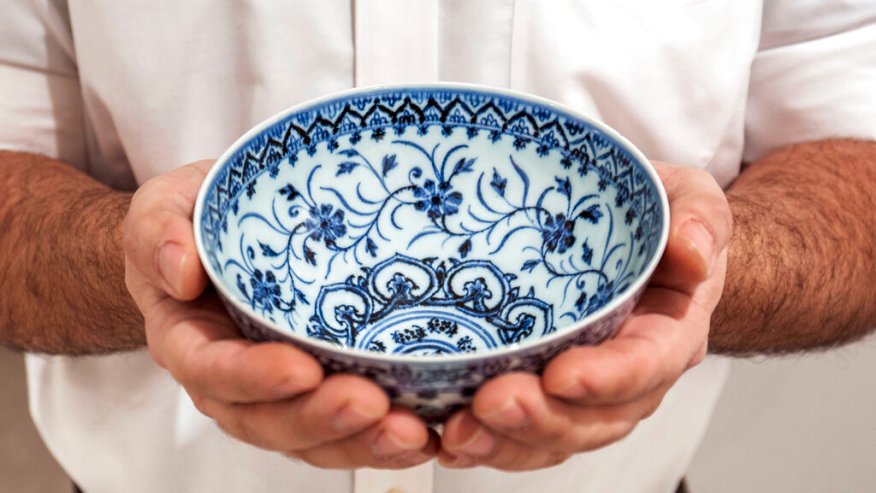
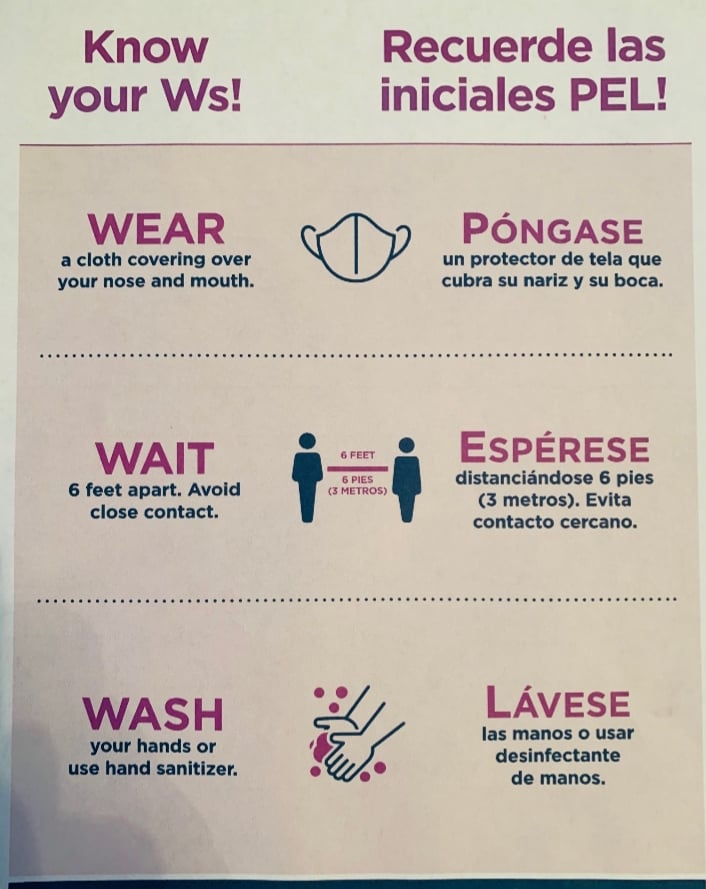
 RSS Feed
RSS Feed
